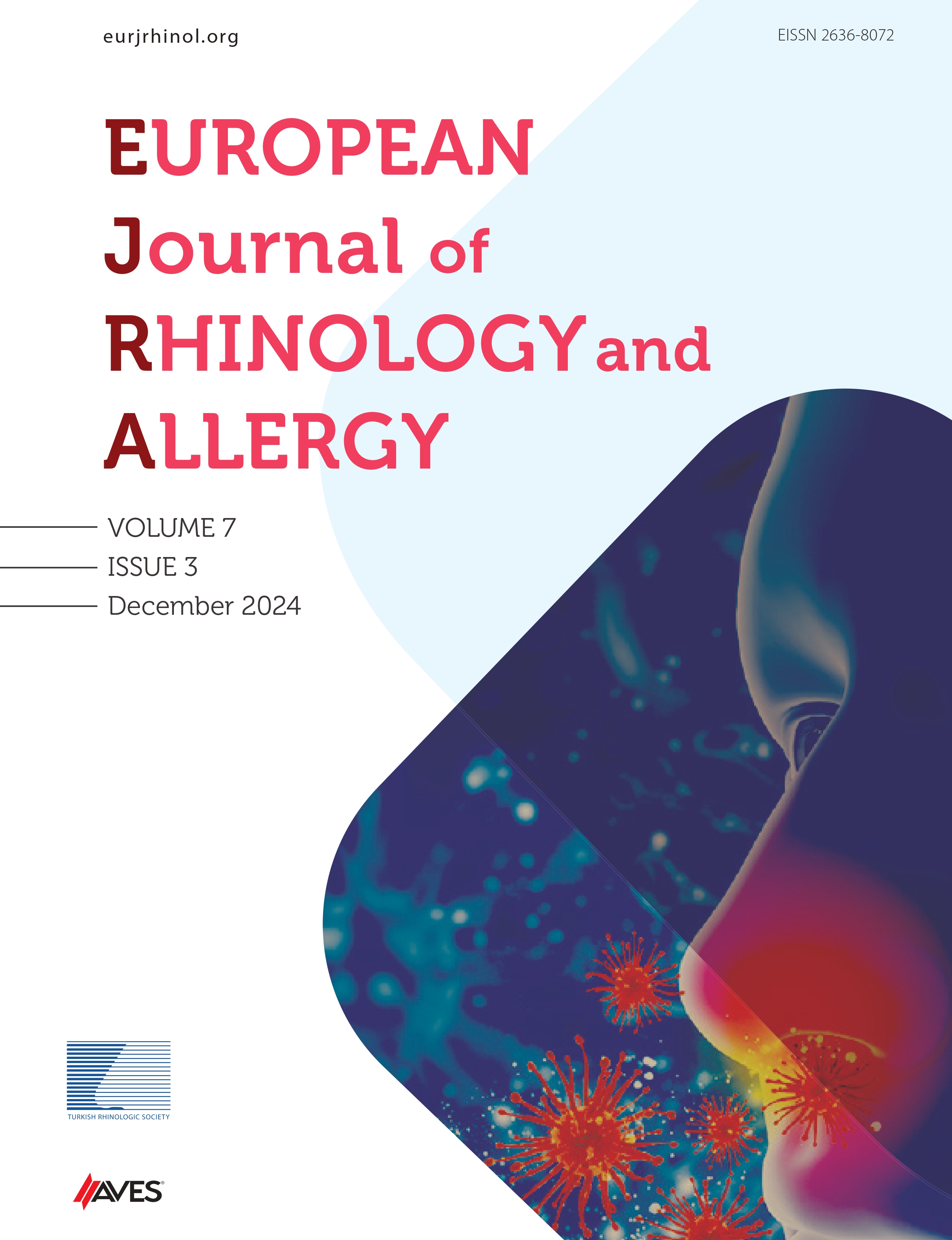Abstract
Objective: Epistaxis is among the most common emergencies of ear, nose, and throat diseases. Although it can be controlled simply by applying ice and a local decongestant, more durable states and massive hemorrhage may affect the quality of life of the patient or even may be life-threatening accompanied by comorbid conditions. These types of resistant and massive hemorrhages, which we rarely encounter, are seen as posterior epistaxis. In this study, we aimed to retrospectively evaluate the patients who had endoscopic sphenopalatine artery ligation and/or cauterization and were admitted to the Uludağ University School of Medicine Hospital Hospital ENT department with resistant idiopathic epistaxis and compare the pre-operative buffer and post-operative pain scores using a visual analog scale (vas).
Material and Methods: The patients who were admitted and hospitalized with epistaxis between 2014 and 2018 were evaluated retrospectively. A total of 60 patients were investigated. Cases with factors that may be involved in the etiology such as post-operative trauma, intranasal benign/malignant lesion, and bleeding diathesis were excluded in the first step. Patients who had been hospitalized with idiopathic resistant epistaxis but had not undergone transnasal endoscopic sphenopalatine artery ligation (TESPAL) and/or cauterization under general anesthesia were excluded. As a result, 10 patients were included in this study.
Results: In our study, the surgical success rate was found to be 100%. There was a significant difference between vas and post-operative vas in terms of pain during pre-operative tamponade.
Conclusion: TESPAL and/or cauterization seems to be an effective method. Its positive contribution to the morbidity and quality of life of the patient, as in our study, especially its effect on the level of pain, was evident when compared with conservative methods.
Cite this article as: Yavuz HB, Demir UL, Kasapoğlu F. The Efficacy of Sphenopalatine Artery Cauterization with or without Ligation in Idiopathic Resistant Posterior Epistaxis. Eur J Rhinol Allergy 2019; 2(1): 17-20.

.png)

.png)